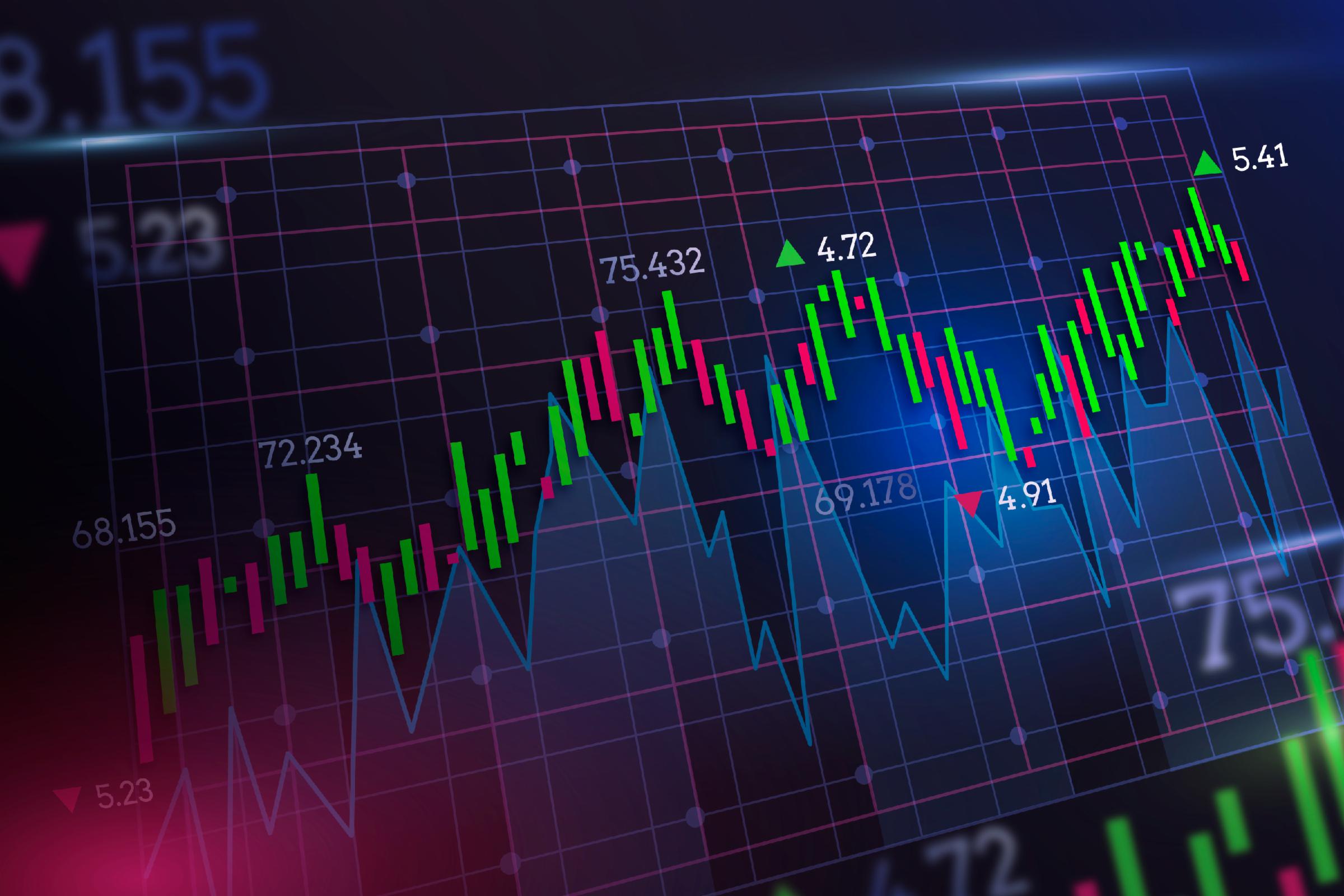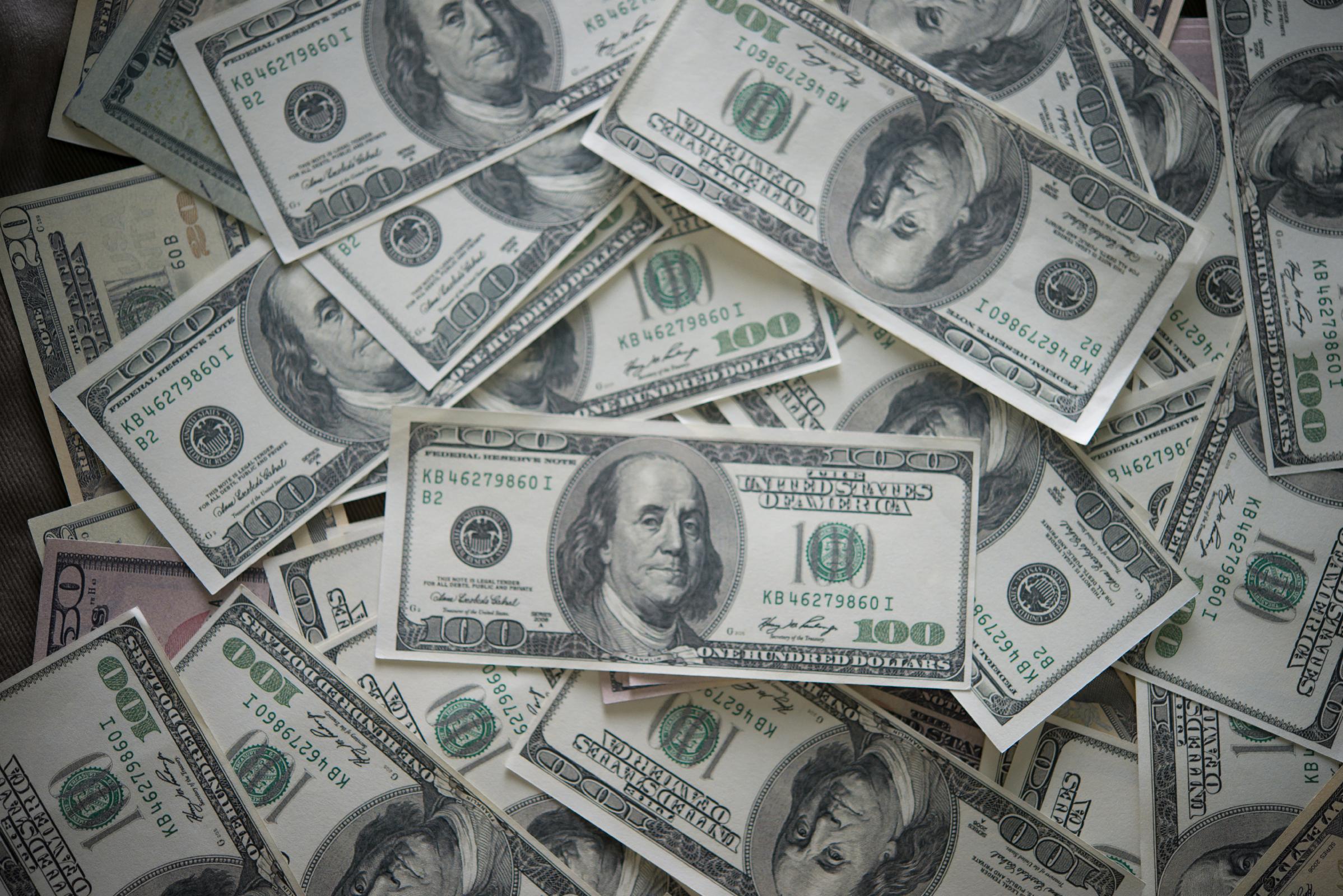2023-12-20 03:14
何为避险货币? 避险货币通常被认为是保值货币,因为它们在面对政治、经济、战争、市场等因素时有着较高的抵抗能力,不太容易受到这些因素的影响。这些货币通常具有稳定的汇率,不容易贬值,因此在市场风险较高时会吸引大量资金流入。需要注意的是,尽管避险货币试图最大程度地避免贬值风险,但并不意味着它们绝对不会贬值。 目前,在众多的货币中,市场上主要的避险货币包括瑞士法郎、日元和美元。 瑞士法郎 瑞士作为欧洲唯一一个在两次世界大战中幸免于波及的国家,以其持久的中立政策而闻名。这种中立使得瑞士能够独立于国际政治局势,并且在经济因素方面,其享有声誉的银行保密制度和独立制定的货币政策也有助于其免受影响。因此,当全球局势紧张或经济增长不确定时,投资者倾向于将资金转换为瑞士法郎作为避险手段。同时,瑞士长期保持良好的国际收支状况,保持着持续的账户盈余,进一步增强了投资者对瑞士法郎的信心,形成了良性循环。 日元 日本的利率长期处于低水平。当其他国家降息时,高利率货币的汇率可能会受到影响而导致货币贬值。然而,作为低息货币的日本则不太容易受到这种贬值影响,因此具备了避险属性。由于长期维持低利率,日本已经没有太多的降息空间。在其他国家降息导致货币贬值的情况下,日本通常不会降息,因此成为了主要的避险货币选择。" "此外,作为一个独立的岛国,日本并未与任何大陆相连,地理因素使其相对不易受到政治、战争或市场波动的影响,从而最大程度地避免了货币贬值风险。同时,作为发达国家,日本是一个经济高度发达的国家,其建立了健全的经济架构、成熟的经济体系和全面的金融体系,这些因素为日元提供了坚实的支持。 美元 美国作为世界上最重要的大国之一,其货币美元被视为国际货币的代表。大多数国家都将美元视为极为重要的外汇储备。许多大宗商品,如粮食和石油等,通常需要使用美元进行交易,这巩固了美元在国际上的地位。此外,美国在科技领域处于世界领先地位,许多跨国企业均为美国公司,这促进了全球投资者将资金投入美国以获取回报,充分体现了资本逐利的趋势。因此,在如此强劲的需求下,美元的价值通常不会大幅贬值,这也巩固了美元作为避险货币的地位。 除了前述的三种主流国际避险货币外,人民币也开始逐渐走向成为全球避险货币之一。中国强劲的发展使其在国际舞台上的影响力不断增强。此外,欧美国家因乌克兰局势对俄罗斯实施制裁,俄罗斯开始选择使用人民币进行结算,并显示出摆脱美元的国际货币趋势。在这种趋势持续下去的情况下,人民币有望成为国际避险货币之一。 好消息!双重活动,双倍好处! 【第一波活动】VC课程独家优惠 VC Plus目前正在进行年末优惠活动。你只需要在促销结束前任意参加任何VC Plus的网络研讨会并开设VC Plus户口就能参加本次活动 此活动有三种不同的优惠: 优惠1:100%折扣! 步骤:参加网络研讨会 + 开VCPlus账户 + 14天内存入500美元 优惠2:30%折扣! 步骤:参加网络研讨会 + 开VCPlus账户 + 14天内存入100美元 优惠3:10%折扣! 步骤:参加网络研讨会 + 开VCPlus账户。 了解更多关于VCPlus的课程内容: mqac.i3investor.com/mqtrader/mqdemy/landing/course/desc/36/intermediate *须符合条规 仅限2023年,千万别错过! 【第二波活动】VCPlus真实交易比赛,赢取第九代iPad 比赛时间:2023年6月11日至2024年3月2日 持续时间:90天 平台:VCPlus 准备好在VCPlus真实交易比赛中享受震撼体验!我们很高兴邀请您参加这场展示交易技能的终极盛会,您有机会赢得令人难以置信的奖品。最棒的部分是什么呢?您只需点击几下即可参加这场激动人心的比赛! 立即注册展示您的交易能力:https://bit.ly/3P8vNgD 点击此处了解参加此活动的步骤! 适用条款和条件 通过一次性存款500美元抓住这个机会,符合两项活动的资格。不要错过!

2023-12-01 03:44
How U.S. Interest Rate Hikes Impact Global Currencies: A Simple Guide Ever wondered why a decision made in the United States about interest rates can affect currencies worldwide? Let's break it down in simple terms. 1. Interest Rate Boosts in the U.S When the U.S. decides to raise interest rates, it's like offering a better deal to investors. They flock to the U.S. for higher returns, increasing demand for the U.S. dollar. 2. Money Flowing to the U.S This increased demand means more people need U.S. dollars, causing other currencies to lose value as investors shift their money to the stronger U.S. dollar. 3. Global Carry Trade Investors often engage in carry trades, borrowing money in currencies with lower interest rates to invest in currencies with higher rates. If U.S. interest rates rise, it becomes more expensive to borrow U.S. dollars, and investors may unwind carry trades. This can lead to the selling of other currencies and buying of the U.S. dollar, causing depreciation in other currencies. 4. Trade Balances and Export Challenges A stronger U.S. dollar can make U.S. exports more expensive for other countries, potentially impacting trade balances. As other currencies weaken relative to the U.S. dollar, it becomes more challenging for other countries to import goods from the U.S., potentially leading to trade imbalances. 5. Borrowing Costs for Other Countries Many countries borrow in U.S. dollars. When U.S. interest rates go up, it becomes more expensive for them to repay their dollar-denominated debts, putting pressure on their currencies. 6. Global Risk Factors Changes in U.S. interest rates can influence how risky or safe investments are perceived globally. If the U.S. is raising rates, investors may shift away from riskier assets, impacting currencies of emerging markets. Conclusion In a nutshell, when the U.S. makes decisions about interest rates, it's like a ripple effect, impacting currencies worldwide. Other countries and their currencies navigate these changes as the global economic landscape adjusts. Understanding this connection helps us see why the captain's decisions on the U.S. economic ship matter to everyone on the economic seas. Practice with Demo Account today VCPlus offers a demo account mode, which lets you practice trading without using real cash. It's like a training ground for getting better at trading. Sign up for a free VCPlus account today! Download the VCPlus app and sign up for a free trading account Link for iOS Link for Android

2023-12-01 03:44
How U.S. Interest Rate Hikes Impact Global Currencies: A Simple Guide Ever wondered why a decision made in the United States about interest rates can affect currencies worldwide? Let's break it down in simple terms. 1. Interest Rate Boosts in the U.S When the U.S. decides to raise interest rates, it's like offering a better deal to investors. They flock to the U.S. for higher returns, increasing demand for the U.S. dollar. 2. Money Flowing to the U.S This increased demand means more people need U.S. dollars, causing other currencies to lose value as investors shift their money to the stronger U.S. dollar. 3. Global Carry Trade Investors often engage in carry trades, borrowing money in currencies with lower interest rates to invest in currencies with higher rates. If U.S. interest rates rise, it becomes more expensive to borrow U.S. dollars, and investors may unwind carry trades. This can lead to the selling of other currencies and buying of the U.S. dollar, causing depreciation in other currencies. 4. Trade Balances and Export Challenges A stronger U.S. dollar can make U.S. exports more expensive for other countries, potentially impacting trade balances. As other currencies weaken relative to the U.S. dollar, it becomes more challenging for other countries to import goods from the U.S., potentially leading to trade imbalances. 5. Borrowing Costs for Other Countries Many countries borrow in U.S. dollars. When U.S. interest rates go up, it becomes more expensive for them to repay their dollar-denominated debts, putting pressure on their currencies. 6. Global Risk Factors Changes in U.S. interest rates can influence how risky or safe investments are perceived globally. If the U.S. is raising rates, investors may shift away from riskier assets, impacting currencies of emerging markets. Conclusion In a nutshell, when the U.S. makes decisions about interest rates, it's like a ripple effect, impacting currencies worldwide. Other countries and their currencies navigate these changes as the global economic landscape adjusts. Understanding this connection helps us see why the captain's decisions on the U.S. economic ship matter to everyone on the economic seas. Practice with Demo Account today VCPlus offers a demo account mode, which lets you practice trading without using real cash. It's like a training ground for getting better at trading. Sign up for a free VCPlus account today! Download the VCPlus app and sign up for a free trading account Link for iOS Link for Android

2023-11-23 03:29
Source: Investing.com The US Dollar Index (DXY) has undergone two notable downward corrections in November and has maintained a consistent downward trend since reaching its high of 107.11, resulting in a decline of approximately 3.2%. What precisely is influencing this drop in the US Dollar Index? Now, let's explore the factors contributing to this outcome. The rise in the US Dollar Index in the past was influenced by several factors. The story takes us back to the pandemic period. As the pandemic struck, the United States swiftly reduced interest rates to zero and continued quantitative easing, resulting in an increased circulation of US dollars in the market. During that time, the US dollar also underwent a period of decline. Source: Investing.com The Federal Reserve's unexpected announcement of a rate cut from 1.25% to 0.25% in March 2020 triggered an immediate weakening of the U.S. dollar index, which persisted for nine months, reaching its lowest point between December 2021 and June 2022. This decline can be attributed to several factors: The Federal Reserve's decisions diverged from market expectations, leading to a prolonged period of market adjustment. A sudden decrease in US interest rates made currencies of other countries comparatively more attractive. This trend continued until other nations mirrored the US rate cuts, gradually reducing their attractiveness and stabilizing the US dollar index. The economic standstill during the pandemic resulted in reduced demand for the US dollar. Understanding the factors influencing the drop in the US dollar index before the pandemic helps pave the way to further explore the subsequent rise in the index. Source: Investing.com Based on the chart, we've identified three phases when the US dollar index began to strengthen: Phase One: Countries began lifting restrictions, initiating economic recovery (depicted in the green column). During this phase, nations gradually reopened and revitalized economic activities, sparking a resurgence in international trade. As the US dollar is the primary currency for most commodity transactions worldwide, the revived international trade increased the demand for the US dollar. This initial uptick in the US dollar index set the stage for the subsequent two phases, which were pivotal in contributing to the significant rise in the index. Phase Two: The Onset of the Russia-Ukraine War (indicated in the red column). The commencement of the Russia -Ukraine war wielded a profound impact on the global landscape. With Russia and Ukraine situated in Eastern Europe, neighboring countries like Poland, Romania, Germany, and Austria faced potential risks. Initially uncertain about the conflict's scale, European nations grappled with the question of asset security. Seeking safer alternatives, attention turned to the United States, a leading global power geographically distant from the conflict. Consequently, there was a significant shift of assets into US dollars, deposited in the US as a perceived secure haven. Moreover, given that the Euro constitutes over 50% of the entire US dollar index, the Euro's reaction to the US dollar holds paramount importance. This led to a substantial rise in the US dollar index during this second phase. Phase Three: Federal Reserve Raises Interest Rates (depicted in the blue column). In this phase, the primary focus shifted to 'inflation,' a trend that had been brewing since the initial phase's early days. As countries lifted COVID restrictions, disrupted supply chains led to goods scarcity and subsequent price surges. Furthermore, the Russo-Ukraine War heightened international crude oil prices, exacerbating inflation in the United States. By 2022, inflation reached its peak (the first time the US faced inflation above 9.1% since pre-1980). Amid supply chain disruptions and soaring international crude oil prices, inflation surged in the United States, prompting the Federal Reserve to contemplate interest rate hikes. This economic scenario likely prompted savvy traders to position themselves for a bullish trend in the US dollar. Source: Investing.com As the three phases continued to unfold, the US Dollar Index eventually peaked between September and November 2022. During this period, signs of declining or slowing inflation emerged, and the impact of the Russo-Ukrainian conflict didn't extend significantly to other countries. Consequently, the US Dollar Index gradually began to decline, fluctuating within the range of 100 to 105. Throughout this time, the Federal Reserve oscillated between dovish and hawkish approaches, carefully managing public expectations to prevent market panic. This cautious approach helped maintain the US Dollar Index in a consolidation phase. The US dollar seems to show signs of weakening, how is this evident? Source: Investing.com Recently, the US Dollar Index has been notably trending downward, notably marked by two substantial bearish candles that distinctly breached the support level in a straight line. These two significant bearish movements occurred on November 3, 2023, and November 14, 2023, drawing particular attention to their timeline. Source: Forex Factory On November 3, 2023, the United States released the non-farm employment figures. This time, the numbers were worse than both the previous data and expectations. Weaker employment figures typically suggest an economic slowdown, which, in turn, is seen as favorable for declining inflation. Consequently, based on these expectations, the public might anticipate that a decrease in inflation could potentially signal an economic downturn. This scenario could prompt the Federal Reserve to consider lowering interest rates as a measure to navigate the economy through a potential recession. Source: Forex Factory On November 14, 2023, the United States released its inflation data, revealing a Year-over-Year (YoY) rate of 3.2% and a Month-over-Month (MoM) rate of 0%. Following this report, the market grew more convinced that the Federal Reserve wouldn't proceed with further interest rate hikes. In fact, there's a strong likelihood that they might accelerate the schedule for interest rate cuts. Should the United States initiate interest rate reductions, the appeal of its currency would likely diminish, leading to a continued decline of the US dollar index towards 100. Next economic data worth paying attention to The upcoming crucial economic data to monitor will be the GDP. A slowdown in the growth of the US economy could pose a worst-case scenario, potentially leading to a recession. Consequently, if GDP growth starts declining, the Federal Reserve might contemplate an earlier decision to cut interest rates. Such a move could further hasten the decline of the US dollar index. The market embodies the collective attitudes of all participants. Each individual's decision influences market trends. Therefore, predicting the market in advance necessitates forecasting the overall reactions of all participants. For instance, traders' expectations regarding the Federal Reserve's actions and the Fed's assessment of economic trends are intricately linked. Mastering the deduction of event progression allows positioning oneself ahead in trading and capitalizing on price differentials to generate profits. Great news! Double campaign, double benefits! [First Campaign] VC Course Exclusive Offers VC Plus is currently running a year-end promotion. All you need to do is join any VC webinar and open a VC Plus account before the promotion ends. There are three different tiers of promotion: Promotion 1: 100% discount Join webinar + Open VC Plus account + Deposit USD 500 within 14 days Promotion 2: 30% discount Join webinar + Open VC Plus account + Deposit USD 100 within 14 days Promotion 3: 10% discount Join webinar + Open VC Plus account Know more about the VC Plus course: https://mqac.i3investor.com/mqtrader/mqdemy/landing/course/desc/36/intermediate Promotion only valid in 2023 *T&Cs apply [Second Campaign] VCPlus Real Trading Contest, Win IPad 9th Gen Tournament Period: 06/11/2023 - 03/02/2024 Duration: 90 days Platform: VCPlus Gear up for an electrifying experience at the VCPlus Real Trading Contest! We're delighted to invite you to the ultimate showcase of trading skills, where you could be on the verge of winning incredible prizes. And the best part? Your entry into this thrilling competition is just a few clicks away! Register now to showcase your trading prowess:https://bit.ly/3P8vNgD Click here to learn the steps to join this campaign! Terms and conditions apply Seize this opportunity by making a one-time deposit of USD 500 to qualify for both campaigns. Don't miss out!

2023-11-15 04:50
The ultimate guide to Major, Minor, and Exotic currency pairs Hey there, future forex pro! Have you heard about Major, Minor, and Exotic Currency Pairs? Don't sweat it if it sounds like jargon. We're here to break it down for you in simple terms so you can ace your forex game. Major Currency Pairs: The Big Shots Major Currency Pairs are like the cool kids in forex – always with the US dollar (USD). Here are a few you should know: EUR/USD (Euro/US Dollar): Euro and US Dollar, the power couple. What happens here can set the vibe for the whole forex party. USD/JPY (US Dollar/Japanese Yen): The US Dollar and the Japanese Yen team up. It's like a tag team reflecting how the US and Japan do business GBP/USD (British Pound/US Dollar): British Pound buddies up with the US Dollar. Picture them as the dynamic duo of currency pairs. Minor Currency Pairs: The Sidekicks Minor Currency Pairs, or Cross Currency Pairs, skip the USD. These pairs show the different currencies working together. Here are a couple to remember: EUR/GBP (Euro/British Pound): Euro and British Pound side by side without the US Dollar. It's like teamwork without the big boss. AUD/JPY (Australian Dollar/Japanese Yen): An Aussie and Japanese Yen combo shows how Australia and Japan do their economic dance. NZD/CAD (New Zealand Dollar/Canadian Dollar): Kiwi and Loonie bringing a fresh vibe to the Forex stage. They're like the cool new kids in town. Exotic Currency Pairs: The Adventurers Exotic Currency Pairs are a bit more adventurous, mixing a major currency with one from a smaller or newer place. They might not make headlines every day, but they're interesting: USD/TRY (US Dollar/Turkish Lira): A rollercoaster where the steady US Dollar meets the lively Turkish Lira. It's like a financial adventure. EUR/SEK (Euro/Swedish Krona): A Scandinavian drama with the Euro and the Swedish Krona, showing how Europe and the Nordic region do their thing. USD/THB (US Dollar/Thai Baht): A tropical twist where the US Dollar dances with the Thai Baht, showing the economic vibe of Southeast Asia. Conclusion: Major, Minor, and Exotic Currency Pairs – now you're in the know. Whether you're sticking with the popular ones, exploring diverse currencies, or trying something more exotic, understanding these pairs is your ticket to rocking the forex scene. Happy trading! VCPlus offers a demo account mode, which lets you practice trading without using real cash. It's like a training ground for getting better at trading. You can sign up for a free VCPlus account today! Download the VCPlus app and sign up for a free trading account today! Link for iOS Link for Android

2023-11-08 01:39
在上一篇文章中,我们已经了解了全球主要能源和金属大宗商品的产地。如果你还没有阅读过上一篇文章,你可以点击阅读。这样,每当这些生产国在国际上发生动荡时,我们就能立即将其与相关的大宗商品联系起来,并开始预测它们的价格。在这篇文章中,我们将会继续分析另外一组至关重要的大宗商品,那就是农产品。农产品是所有生物的基本需求,任何价格上的波动都会牵连甚广,所以往往也有助于交易者在其中找出交易机会。 以下这些农产品大宗商品在全球范围内非常热门,因为它们的广泛使用意味着当它们的价格发生较大波动时,也会对各个领域产生更大的影响。 玉米 资料来源: 美国农业部 玉米因其自身拥有者较高的营养价值所以成为了世界主粮之一。同时也是食品、医疗卫生、轻工业、化工业等的不可或缺的原料之一。世界三大玉米出产国分别为美国,中国与巴西,一共占了全球玉米生产的66%。其中美国作为世界最大的玉米生产国,其产量占了全球生产的32%,这是因为在美国种植玉米的利润会比种植其他粮食的利润来得更高。而且美国的玉米除了作为人类粮食和牲畜饲料以外,还能生产成玉米糖浆以代替有限的甘蔗与甜菜生产的食糖。 还有一个非常有趣的知识点,美国玉米的价格会随着汽油的价格波动。这是因为玉米可以用来提炼乙醇,然后将乙醇混入汽油中,从而降低汽油的成本。因此,当原油价格升高时,利用玉米提炼乙醇的利润也会增加,导致市场大量购买玉米,从而使玉米价格上涨。 大米 资料来源: World Economic Forum 大米作为亚洲大部分人口的主要日常主食,在粮食方面拥有极为重要的地位。从数据中,我们可以轻松地注意到,大米的主要生产国基本都位于亚洲,其中以中国和印度占据最大的份额,分别占28%和23.5%。 资料来源: 美国农业部 虽然中国是大米的最大生产国,但几乎所有的大米都用于国内消费,因此,全球大米出口的首位责任落在了印度肩上,接着是泰国和越南。印度本身占据了全球大米出口的40%以上份额,因此,当印度在7月宣布出口大米禁令时,市场担忧是否会推高未来的米价。这一消息也导致了许多国家的居民爆发了大规模的大米抢购潮。 小麦 资料来源:美国农业部 小麦作为三大谷物之一,其主要用途之一是作为人类的主要口粮。小麦磨成粉后,可以制成面包、面条、馒头、饼干等各种食品。此外,小麦还可以用于酿造啤酒、酒精、白酒,或作为生物质燃料。小麦的最大生产国是中国和欧洲,它们分别占据了全球总产量的17%。印度占14%,俄罗斯占11%。 当然,除了关注粮食生产国之外,我们也应该适当关注粮食出口国。因为很多时候,高产的国家由于拥有庞大的人口,因此大部分粮食都被用于国内需求。然而,这并不意味着它们对国际粮食价格没有影响。可以想象,如果某一天生产国发生了天灾或人祸,导致粮食供应减少,它们势必需要从其他国家进口粮食,这将推高国际粮食价格。至于粮食出口国部分,我们可以参考俄乌战争的现实案例。俄罗斯和乌克兰都是全球头号粮食出口国(两国小麦出口量占全球四分之一,大麦和玉米出口量占五分之一,葵花子油出口量占一半以上),这也导致全球粮食价格上涨至近20年来的新高。虽然说地缘冲突是导致国际粮食价格上涨的主要原因,但是我们也需要考虑到新冠疫情下的经济冲击还有极端气候所造成的收成欠佳也或多或少影响着国际粮食的价格。 粮食作为人类的必需品,其价格的波动也会影响生活的方方面面,从个人的生活开销到企业或国家的运营成本。因此,只要对国际事件足够敏感,就可以找到不错的交易机会。 好消息! 好消息! VC Plus目前正在进行年末优惠活动。你只需要在促销结束前任意参加任何VC Plus的网络研讨会并开设VC Plus户口就能参加本次活动 此活动有三种不同的优惠: 优惠1:100%折扣! 步骤:参加网络研讨会 + 开VCPlus账户 + 14天内存入500美元 优惠2:30%折扣! 步骤:参加网络研讨会 + 开VCPlus账户 + 14天内存入100美元 优惠3:10%折扣! 步骤:参加网络研讨会 + 开VCPlus账户。 了解更多关于VCPlus的课程内容: mqac.i3investor.com/mqtrader/mqdemy/landing/course/desc/36/intermediate *须符合条规 仅限2023年,千万别错过!
.jpg)